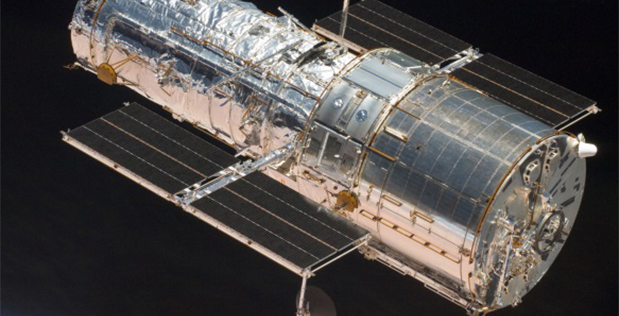The Hubble and Kepler Telescopes are Dying
November 6, 2018
The Hubble and Kepler Telescopes of NASA are used to document solar systems around the galaxy which may possibly hold extraterrestrial life. The Hubble is used to measure how far away other stars and galaxies are from us, and the Kepler is used to document planets near stars which could possibly hold life.
There’s only one problem: both of these telescopes are running near the ends of their lives.
On Oct. 5, NASA discovered that one of the gyroscopes aboard the Hubble was recently damaged, limiting its movement. According to an Oct. 22 report from NASA, These gyroscopes allow the telescope to turn and pivot in order to reposition itself. The last major repair mission was in 2009, during which six new gyroscopes were installed. According to a July 7 report from Fortune.com, the Kepler planned used the last of its fuel to point itself toward Earth and transmit the last of its data to NASA on August 2.
NASA has put Hubble into safe mode following the report of the damaged gyroscope. NASA’s Goddard facility is currently analysing the probe to see if the damage can be repaired. According to an Oct. 19 report from Science News, the telescope will still be functional, even if the third gyroscope does not come back online. NASA does not worry yet about having to completely decommission the Hubble.
This is bad news for many at West Essex, especially those in classes such as CAD and Astronomy.
“I think over time they have changed our views of the universe altogether, such as discovering evidence of the big bang and observing other habitable planets,” said Astronomy teacher Mr. Johnson. “It is now up to us to either travel to these planets to see what’s there. I don’t believe that we will be able to colonize in this generation, but it is a huge leap for humans to leave Earth and get a larger picture of the universe.” Mr. Shea, who teaches CAD and runs the Robotics Club, said, “It is sad that the telescopes have begun to fall apart and deteriorate as much as they have in recent years. Both the Hubble and Kepler have helped increase our knowledge and understanding of the universe in countless ways and have worked well beyond their intended usefulness.”
According to a report from Space.com, NASA hopes that the Hubble will last through 2020, past the planned 2018 launch of a new shuttle called the James Webb Space Telescope. The computers aboard the Hubble are quite old, and a failure within the system could spell the end for the shuttle. According to a report from Forbes, NASA worries about the Hubble getting caught in Earth’s atmosphere and crashing on the surface, possibly injuring civilians, as there is no shuttle in space currently that can re-stabilize the telescope.
The Kepler is running out of fuel, meaning that it will not be able to maneuver and transmit data back to Earth. According to a report from NASA, the Kepler team is trying to get as much data as they can from the shuttle before it is completely dysfunctional. The shuttle’s primary mission ended in 2013 after a second reaction wheel broke, but NASA was able to use pressure from a nearby star to maneuver it.
As the Kepler is not near Earth, NASA does not worry about what will happen to the shuttle after it is decommissioned. According to a March 14, 2018 report, NASA plans to follow up Kepler’s efforts with a new shuttle called the TESS, which was launched on April 18, 2018. According to the official TESS web page, NASA hopes that the TESS will be able to find nearly 1500 exoplanets, including 500 Earth-like planets. The shuttle was launched by Elon Musk’s SpaceX, which also launched the Dragon spacecraft in 2012.


